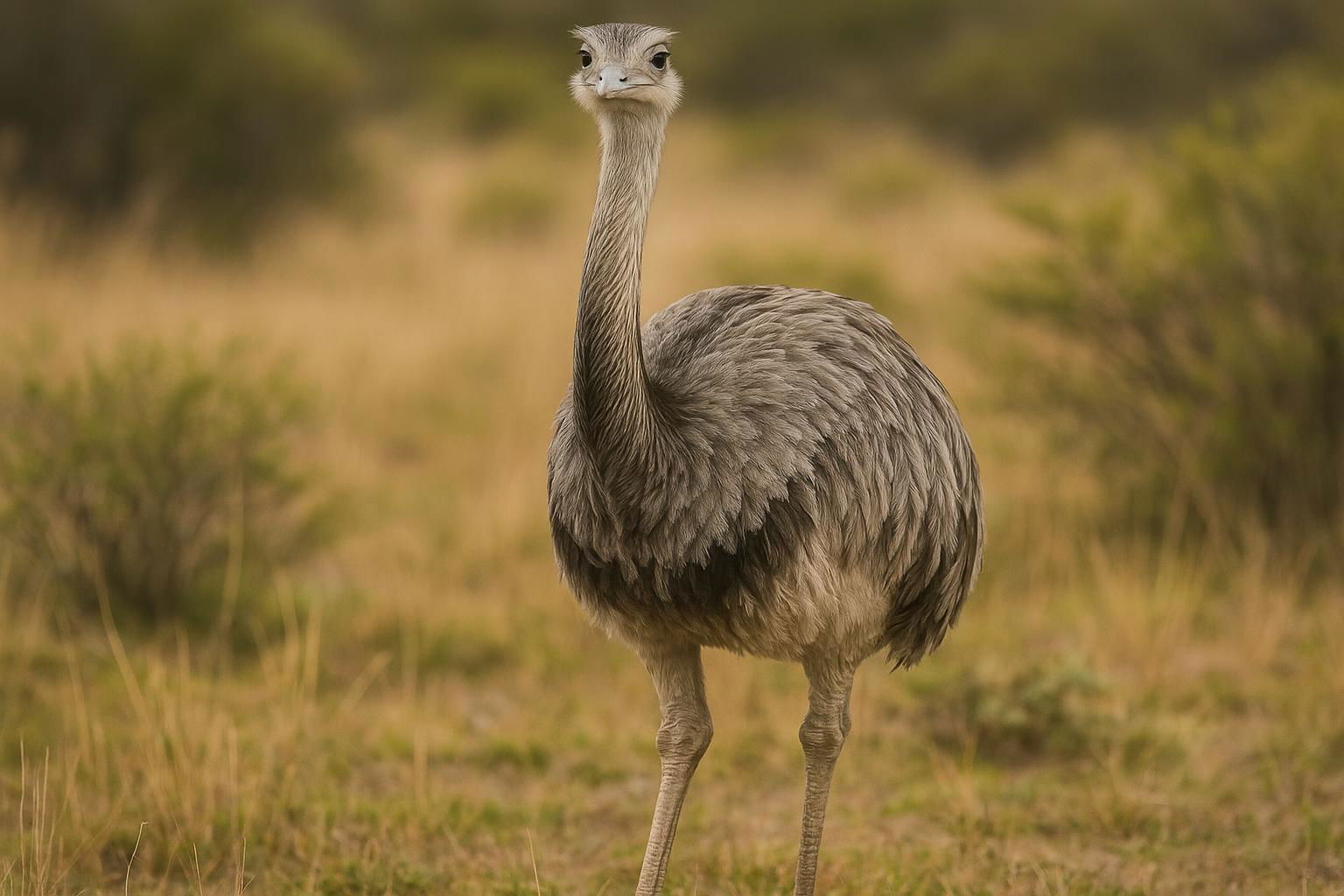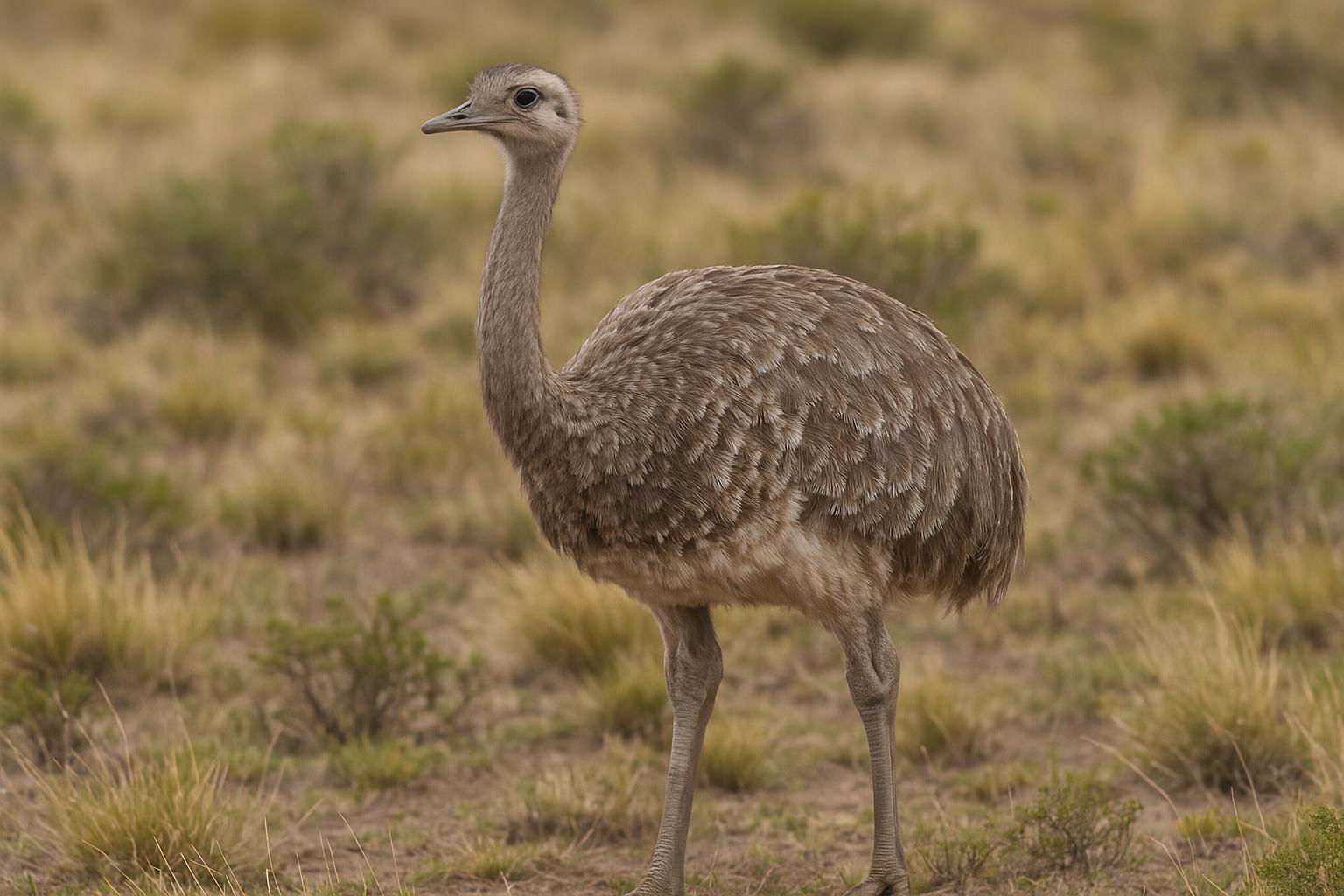
Rhea
Rhea americana
The Rhea (Rhea americana), also known as the Greater Rhea, is a large, flightless bird native to the open grasslands and scrublands of South America, primarily in Argentina, Brazil, Bolivia, Paraguay, and Uruguay. Resembling their distant relatives, the ostriches and emus, rheas are part of the ratite family, which includes other large, flightless birds. Standing approximately 1.5 meters (4.9 feet) tall and weighing up to 40 kilograms (88 pounds), the rhea is the largest bird in South America.
The rhea's plumage is generally grayish-brown with white beneath, and it features a long neck and powerful legs adapted for running, reaching speeds of up to 60 km/h (37 mph). These birds are omnivorous, feeding on a diet that includes plants, seeds, insects, and small vertebrates, which they forage from the ground. Rheas are social animals, often found in flocks of 10 to 100 individuals, especially during the non-breeding season.
During the breeding season, males become territorial and perform elaborate courtship displays to attract females. Interestingly, male rheas are responsible for nest-building and incubating eggs from several females, as well as caring for the young after they hatch. With a declining population due to habitat loss and hunting, rheas are currently considered near-threatened, highlighting the need for conservation efforts to protect these magnificent birds and their ecosystems.

 All Species & Breeds
All Species & Breeds
 Highland Cattle
Highland Cattle
 Miniature Donkeys
Miniature Donkeys
 All Species Directory
All Species Directory
 Highland Cattle in Virginia
Highland Cattle in Virginia
 Miniature Donkeys in Texas
Miniature Donkeys in Texas














